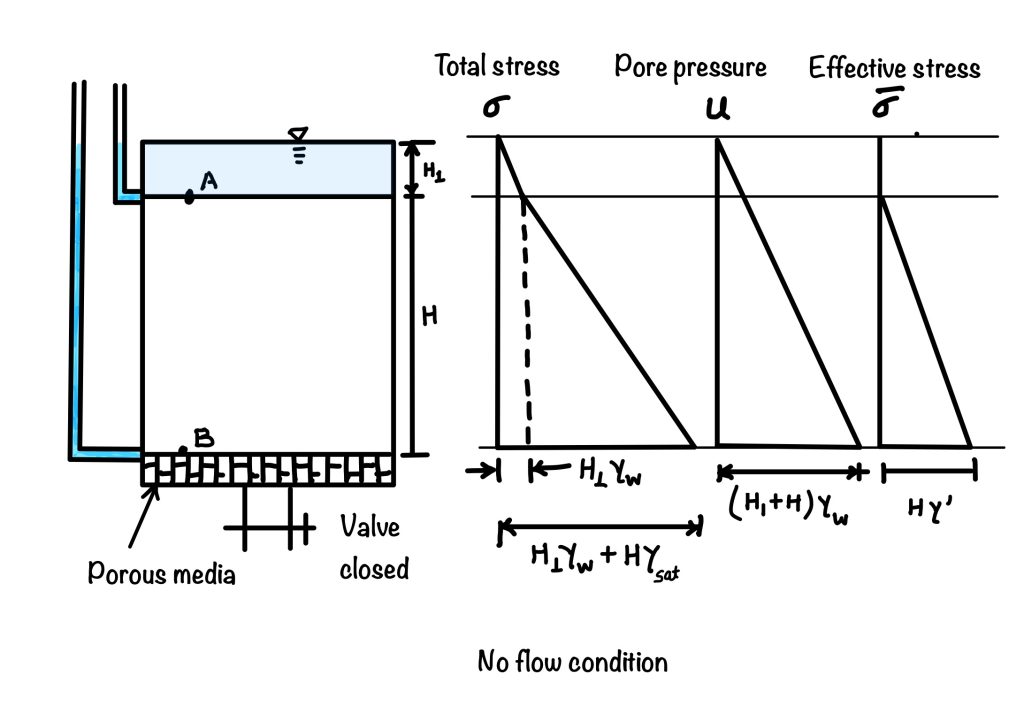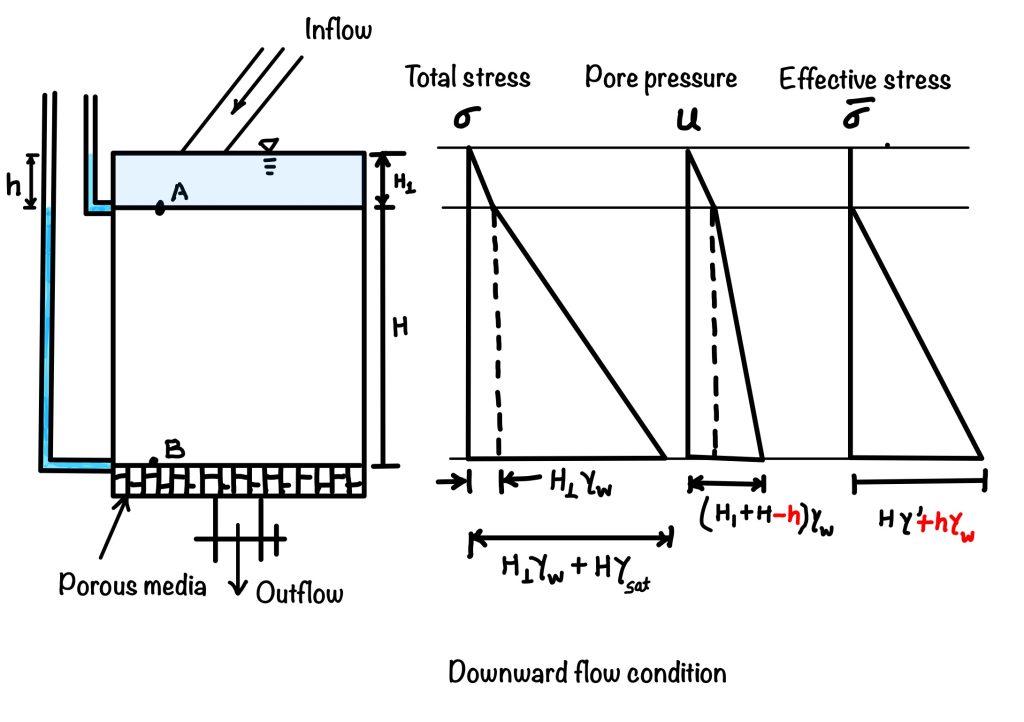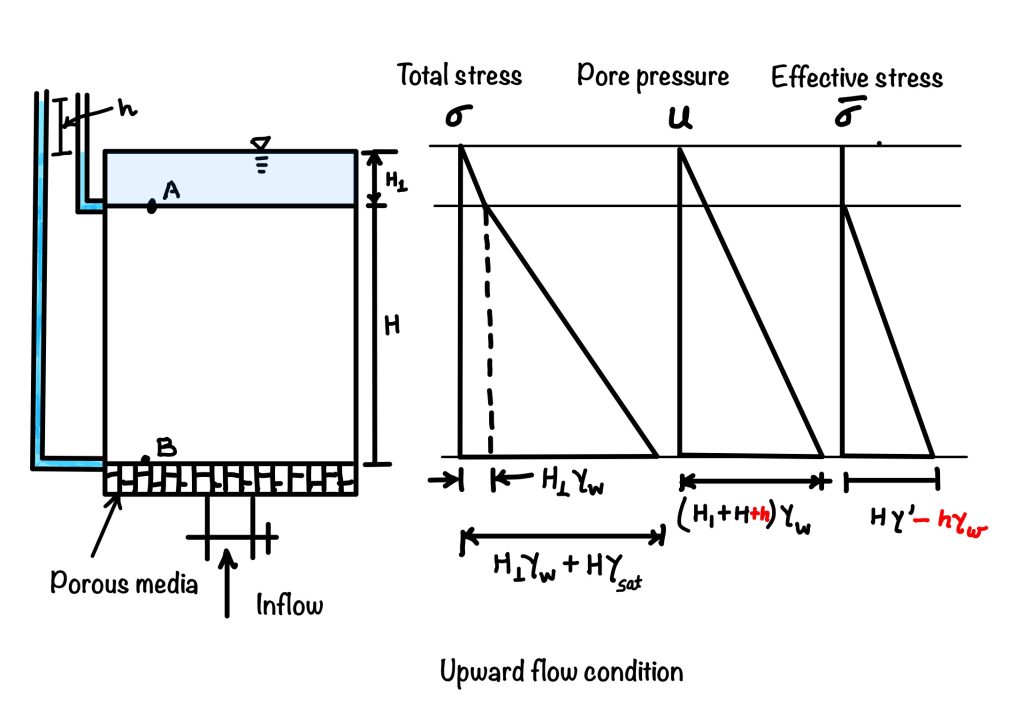You often come across the phrase quicksand while reading the geotechnical engineering. And you might have been thinking, what is so quick in quicksand? So let’s discuss what quicksand is and how quicksand affects you. What are the conditions which make this happen? Is it safe to build a home on quicksand soil? All these questions will be addressed in this post.
Introduction
Quicksand is not any sand; instead, it is the condition of sand which occurs due to high pore pressure. To understand this, we must go across some typical concepts in geotechnical engineering.
We need to understand the basic phenomenon that leads to quicksand conditions to discuss quicksand. Therefore, the following are the learning objectives of this post.
- Pressure head: This is the pressure divided by the unit weight of water. The pressure head at a point in the soil comes from the solid and water above it.
- Datum head: Datum head is the elevation of the point considered from the datum.
- Permeability: It is the ability of water to flow in the soil.
- Seepage force: It is caused by the flowing water in the soil particle.
- Hydraulic gradient: It is the ratio of available head to the length of the flow path.
Seepage force (explained by different flow conditions) and quicksand
The flowing water in the soil causes seepage force. To understand this force, we will take different and no-flow conditions. The seepage force is the extra force in the flow condition from the no-flow condition.
No Flow condition
This is the baseline flow condition from which we will measure the seepage force. Now consider the condition shown in the figure. The flow is not taking place in the soil. As you know, that flow is not taking place; hence the head difference will also be zero. The plot of the total stress, pore pressure, and effective stress variation is in the figure. This figure contains the important values also.

Downward flow condition
Now you consider the same situation; the only difference is that you allowed the flow through the valve. Due to this flow in a downward direction, you can imagine that soil particles may feel some force. Now our task here is to quantify that feeling. Write the total stress, pore pressure, and effective stress variation. You might agree that there will be a head loss when the flow is taken in a downward direction. Consider that head loss which causes the flow to be \(h\).

Upward flow condition causing quicksand
After the downward direction flow, consider the case for the upward direction flow. The only difference you can observe is head of point B is higher than point A. Now with the same concepts, you can write the total stress, pore pressure, and effective stress variation.

When you compare the no-flow condition with the downward or upward flow condition, you may notice the extra term $h \gamma_w$ in the effective stress. This is positive in the downward flow and negative in the upward flow. If we conclude this, this is like downward flow increasing the effective stress that means makes the soil more stable; on the other hand the
$$ F=\frac{h}{H}H\gamma_w \\ F=iH\gamma_w $$
Critical flow for quicksand
We have discussed the different flow conditions and their effect on the soil. You can now decide that the upward flow is responsible for the reduction of the effective stress of soil. When the upward flow increases such that the effective stress becomes zero. The sand posses zero shear strength. This situation is boiling of sand, quicksand condition. You can define the condition when the effective stress in the soil will become zero, and the gradient at this condition is a critical gradient.
$$ H\gamma’-h\gamma_w=0\\i=\frac{\gamma’}{\gamma_w} $$
If the void ratio of the soil is $e$, specific gravity is $G$ the submerged unit weight $\gamma’$ is written as
$$ \gamma’=\frac{(G-1)\gamma_w}{1+e} $$
Hence critical gradient can be expressed as
$$ i=\frac{G-1}{1+e} $$
Conclusions
After reading this post you will agree with that water flowing in the sand changes its effective stress and hence the other engineering properties like shear strength. The main idea in the post is to give you the essence of seepage force. This post also makes you able to quantify the seepage force.
These are the following learnings for you in this post.
- Seepage force: Seepage force in the soil is caused by the flowing water, in the direction of flow.
- Value: Value of seepage for is \(F=h\gamma_w\). Where \(h\) is the head of water, which is causing flow.
- Critical gradient: Critical gradient for the soil is given by \(i=(G-1)/(1+e)\).

Android Apps
⭐️ ⭐️ ⭐️ ⭐️ ⭐️ 1000+ | 400,000 + Downloads (Cumulative)
At eigenplus, our goal is to teach civil engineering students about structural analysis and design starting from the fundamental principles. We do this with the help of interactive android applications and accompanying web articles and videos.
Our apps have helped more than 400 thousand students across the world to understand and learn the concepts of structural engineering. Check out our apps on the google play store.